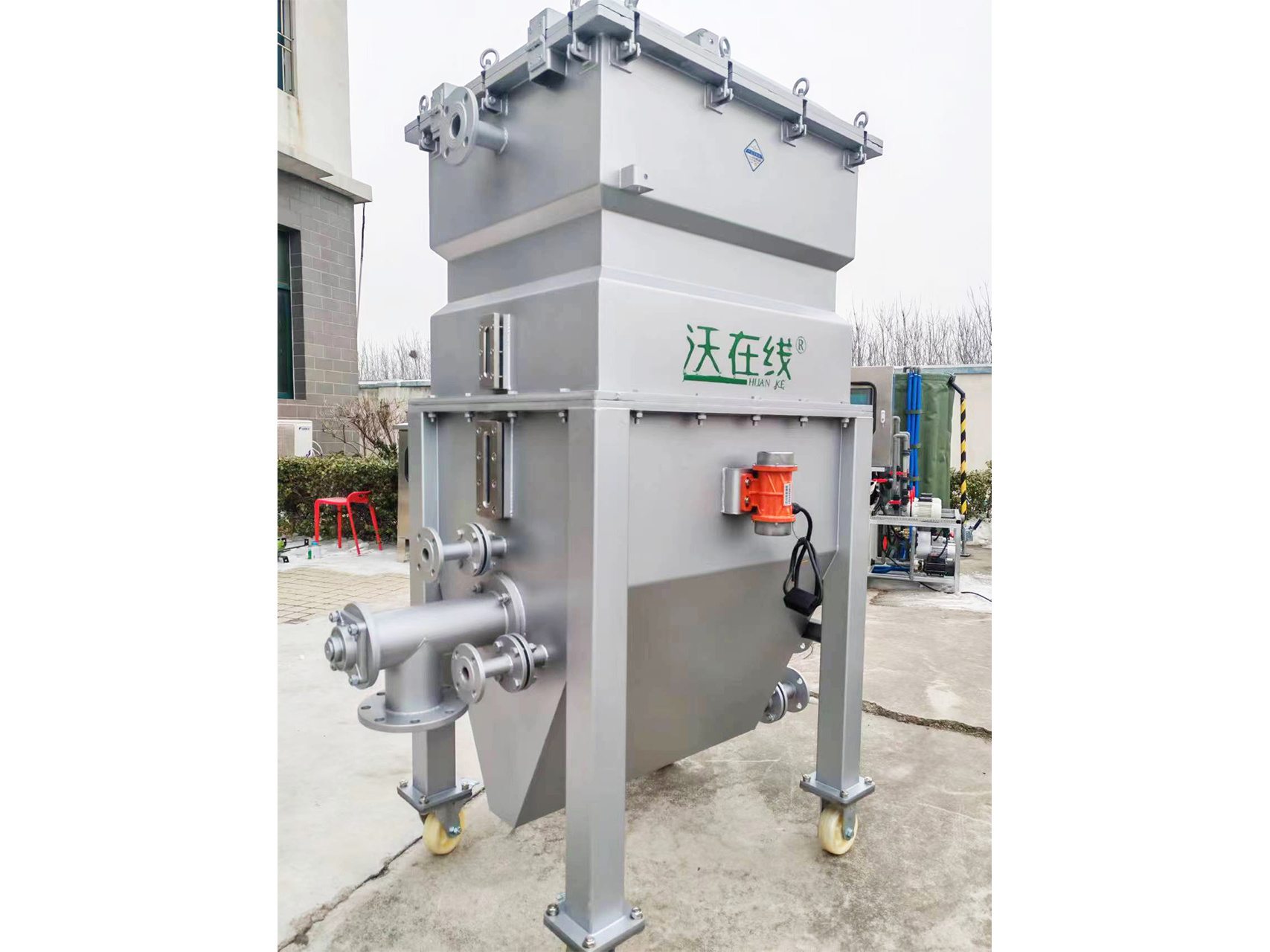28
2025
-
06
The Renewable Fiber Filter: An Innovative Force in Oil Removal
Author:
In scenarios such as industrial wastewater treatment, ship oil pollution control, and oilfield water recycling, the treatment of oily wastewater has always been a core challenge for technological breakthroughs. Traditional methods like gravity separation, air flotation, or chemical demulsification often fail to meet modern environmental protection requirements due to low treatment efficiency, high operation costs, or secondary pollution. The renewable fiber filter, with its innovative design combining micro-porous fiber media and intelligent regeneration technology, provides an efficient, economical, and sustainable solution for oily wastewater treatment.
 1. Technical Core: Structural Advantages of Fiber Materials and Adsorption Mechanisms
1. Technical Core: Structural Advantages of Fiber Materials and Adsorption Mechanisms
The core of the fiber filter lies in its specially processed fiber media. These materials form a three-dimensional micro-porous structure through chemical modification, with a surface area of up to 2,000 square meters per gram and a porosity exceeding 80%. This structure endows it with dual oil removal capabilities:
- Physical interception: The micro-porous structure can 截留 (retain) suspended oil droplets larger than 1 micron. Combined with the hydrophilic-lipophilic properties of the fibers, a water film barrier is formed on the fiber surface to prevent oil droplet penetration.
- Chemical adsorption: Active groups (such as hydroxyl, carboxyl) on the fiber surface bind to oil molecules through van der Waals forces, showing strong adsorption capacity for emulsified oil and dissolved organic matter.
Experimental data shows that in oilfield wastewater treatment, this technology can reduce the effluent oil concentration to below 4 mg/L, suspended solid concentration to below 1 mg/L, and the oil removal rate exceeds 95%, meeting the standard for oilfield reinjection water.
2. Regeneration Technology: Surfactant-Assisted Backwashing for Circular Utilization
The renewability of fiber media is the key to its economic efficiency. Studies have confirmed that deep cleaning of fibers can be achieved through the synergistic effect of surfactants and inorganic electrolytes. For example, when PT surfactant and electrolyte M are prepared at a ratio of 0.1–1.0 g/L and 2.0 g/L, the residual oil content in fibers can be reduced to below 10 mg/g, with a cleaning rate of 99%.
Ultrasonic technology can further reduce water consumption during backwashing. A case study of an ocean-going ship showed that after adopting this technology, backwashing water consumption decreased by 60%, fiber service life extended to more than 3 years, and maintenance costs reduced by 40%.
3. Application Scenarios: Multi-Field Verification of Technical Versatility
- Oilfield water treatment: In low-permeability oil reservoir water injection systems, fiber filters can remove over 95% of suspended oil droplets, preventing formation plugging. After operating a certain oilfield project for 6 months, the qualified rate of injected water quality increased to 98%, saving 120,000 tons of water resources annually.
- Ship oil pollution control: For emulsified oil in cargo oil tank cleaning water, the fiber filter uses aeration-assisted agglomeration technology to increase oil droplet size to over 10 microns for easy flotation separation. After installation on an ocean-going ship, the effluent water quality met IMO emission standards, reducing oil pollution discharge by 200 tons annually.
- Industrial circulating water treatment: In steel plant cooling water systems, this technology can remove over 90% of floating oil and microorganisms, extending equipment life by 2 times and reducing annual chemical usage by 30%.
4. Technical Upgrades: Trends Toward Intelligence and Modularity
The future iterations of fiber filters will focus on:
- Intelligent monitoring: Integrating IoT sensors to real-time monitor pressure difference, flow rate, and oil concentration, automatically triggering backwashing procedures to reduce manual intervention.
- Material innovation: Developing high-temperature and corrosion-resistant nanofibers to adapt to high-temperature oilfield produced water or acidic industrial wastewater treatment.
- Modular design: Achieving rapid deployment through standardized components, shortening the engineering cycle by over 50%.
5. Environmental Value: Water Resource Circulation and Carbon Emission Reduction
The water-saving performance of fiber filters is remarkable. Taking oilfields as an example, a single set of equipment can reduce fresh water intake by 150,000 tons annually and lower carbon emissions by 800 tons. In the shipping sector, its application can reduce ship oil consumption by 2%–5%, corresponding to a carbon dioxide emission reduction of over 100,000 tons annually.
The renewable fiber filter, through interdisciplinary innovation in materials science, fluid mechanics, and chemical engineering, solves the efficiency-cost contradiction of traditional oil removal technologies. With further technological maturity, it will play a more critical role in energy extraction, marine protection, and industrial green transformation, becoming an important technical support for achieving the "double carbon" goal.
Related Products
The Renewable Fiber Filter: An Innovative Force in Oil Removal
2025-06-28
The Application of Membrane Separation Technology in the Recycling and Resource-saving Circular Utilization of 15% Waste Hydrochloric Acid in Electroplating Plants
2025-06-28
Fully Renewable Fiber Filters: A Water Treatment Revolution Beyond Quartz Sand Filters
2025-06-24
Exploration on the Application of Electrodialysis Technology in Desalination of Soy Peptone
2025-06-24
Huanke Environmental Protection Technology
HOTLINE:
Address:Gongye 1st Street, Weicheng District, Weifang City, Shandong Province China
Contact:Zhang Gong
Phone:+86-18865361829
Email:sdhuanke@163.com


Consult
Copyright © 2023 Shandong Huanke Environmental Protection Technology Co., Ltd
